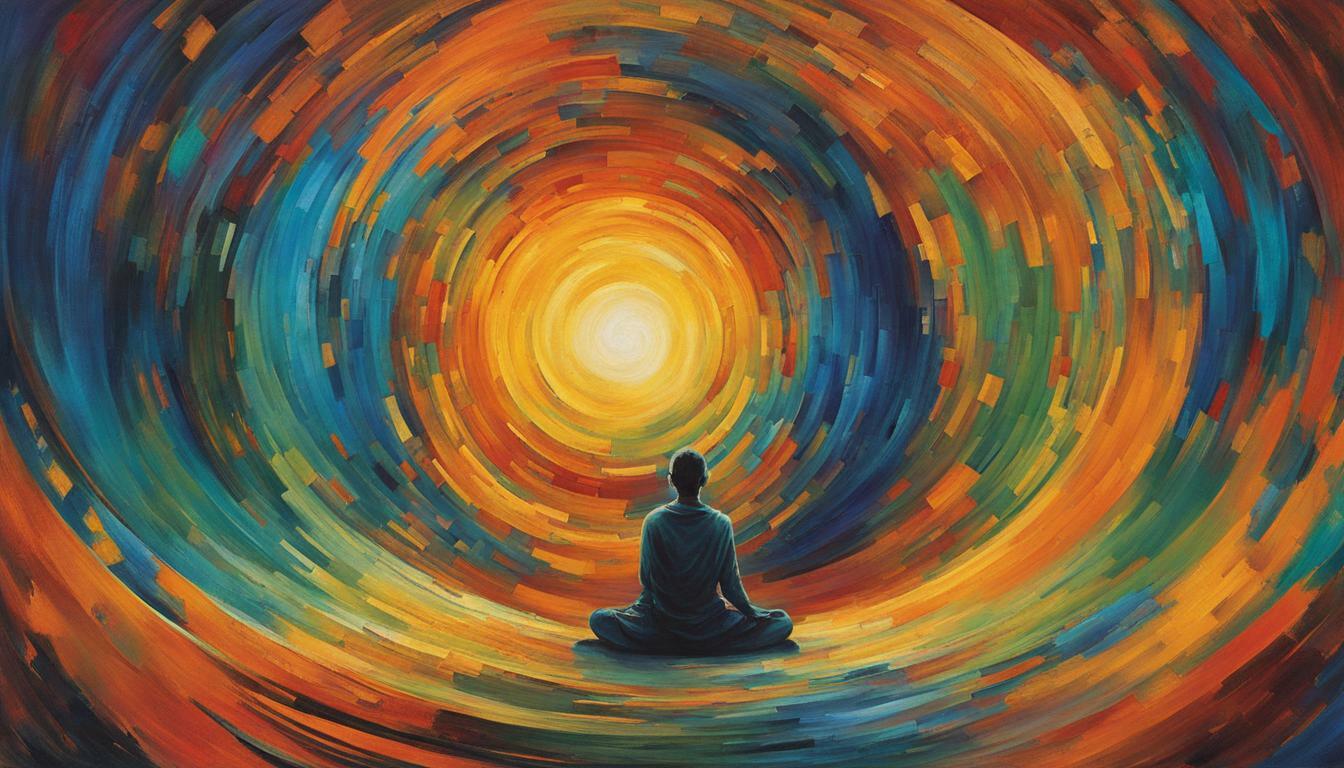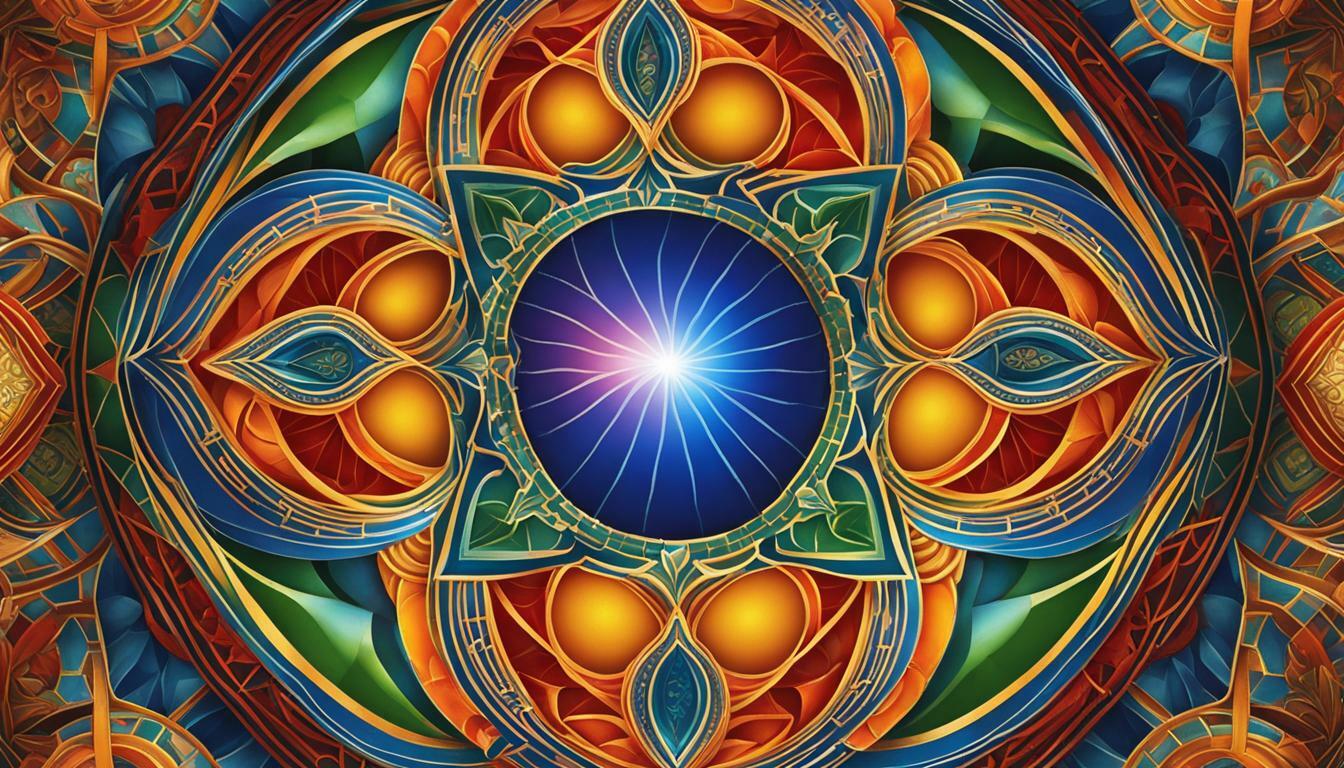Color therapy, also known as chromotherapy, is an intriguing approach that harnesses the power of colors to boost memory and cognitive function. It is based on the belief that different colors have physiological and psychological effects on our well-being.
While scientific research on color therapy is limited, there is evidence to suggest that colors can have a profound impact on our physical and mental health. For example, blue is known to be calming and can improve sleep quality, while green is soothing and easy on the eyes. On the other hand, red can stimulate brain activity and increase appetite, while orange can boost creativity and enthusiasm.
By incorporating color therapy techniques into your daily life, you can potentially enhance your memory and overall well-being. Whether it’s choosing the right colors for your living space or incorporating colors into your clothing and accessories, color therapy can have a positive impact on your cognitive function.
- Color therapy utilizes the power of colors to improve memory and cognitive function.
- Blue and green colors have a calming effect and can enhance sleep and relaxation.
- Red and orange colors stimulate brain activity and boost creativity and enthusiasm.
- Incorporating color therapy techniques into your daily life can have a positive impact on memory and overall well-being.
- Color therapy can be particularly beneficial for older adults living with dementia, providing safety, comfort, and alleviating depression.
Understanding Color Psychology and Its Effects on Memory
Color psychology suggests that certain colors can have a positive impact on memory, and understanding these effects can help us leverage the power of colors for memory improvement. While scientific research on color therapy is limited, there is evidence to suggest that colors have physiological and psychological effects on people. For example, blue is calming and can improve sleep, green is calming and easy on the eyes, red can stimulate brain activity and increase appetite, and orange can boost creativity and enthusiasm.
By incorporating memory-boosting colors into our daily lives, we can create an environment that supports cognitive function. Calming colors like blue and green create a soothing atmosphere, making it easier to focus and retain information. Energizing colors like red and orange, on the other hand, can stimulate brain activity and increase alertness, helping us stay sharp and remember important details.
One way to incorporate these colors into our lives is through the use of color therapy techniques. For example, we can paint our study or workspaces in calming shades of blue or green, or add pops of energizing colors like red or orange in the form of artwork or accessories. We can also use color therapy in our daily routines, such as surrounding ourselves with calming colors before bed to improve sleep quality, or using energizing colors during study sessions or brainstorming activities to enhance focus and creativity.

| Calming Colors | Energizing Colors |
|---|---|
| Blue | Red |
| Green | Orange |
Incorporating color therapy into our daily lives is a simple and effective way to enhance memory and overall well-being. While more research is needed to fully understand the impact of color therapy on memory improvement, embracing the power of colors can offer potential benefits for cognitive function. So why not start exploring the world of color therapy and discover how it can boost your memory?
The Science Behind Color Therapy and Memory Enhancement
While scientific research on color therapy is limited, there is evidence to suggest that colors have physiological and psychological effects that can enhance cognitive function and memory. Color therapy, also known as chromotherapy, is a practice based on the belief that color and colored lights can improve physical and mental health.
Research has shown that different colors can have specific effects on the brain and body. For example, blue is known to be calming and can help improve sleep quality. Green is also calming and easy on the eyes, making it beneficial for reducing stress and promoting relaxation.
On the other hand, colors like red and orange can stimulate brain activity and increase energy levels. Red has been found to enhance cognitive function, while orange can boost creativity and enthusiasm. These energizing colors can be especially useful for improving focus and memory retention.
Incorporating color therapy into daily life and living spaces can have a positive impact on memory and overall well-being. Whether it’s surrounding yourself with calming colors for a peaceful environment, or using energizing colors to promote alertness and focus, color therapy techniques can be easily incorporated into your routine.
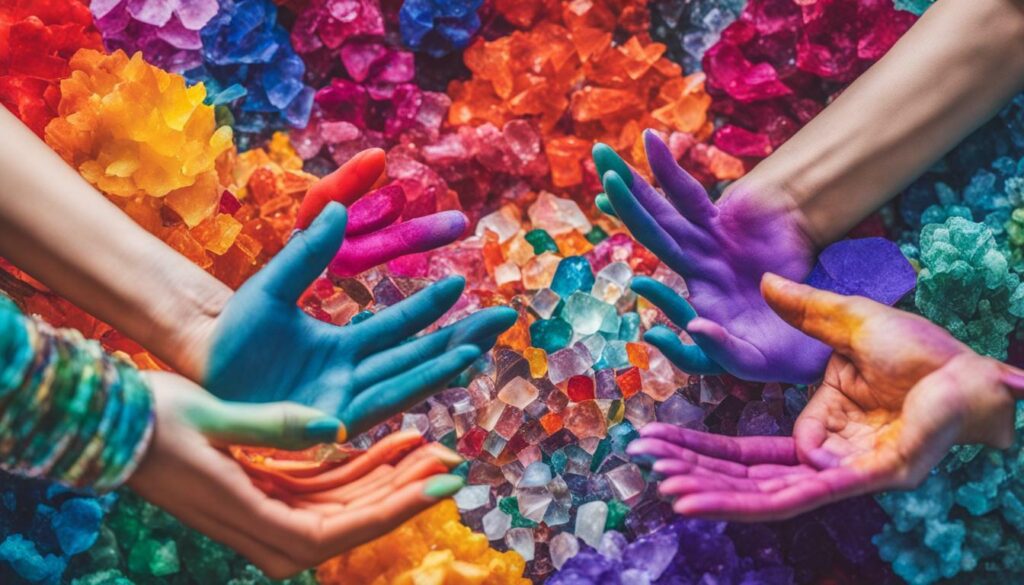
| Color | Effect |
|---|---|
| Blue | Calming, improves sleep |
| Green | Calming, reduces stress |
| Red | Stimulates brain activity |
| Orange | Boosts creativity and enthusiasm |
Calming Colors for Memory Improvement
Calming colors play a significant role in color therapy for memory improvement and brain health, creating a serene environment that can enhance cognitive function. Colors like blue and green have been shown to have a soothing effect on the mind, promoting relaxation and reducing stress. This can be particularly beneficial for memory, as stress can impair cognitive function and hinder the ability to focus and retain information.
Blue, often associated with tranquility and calmness, has been found to improve sleep quality and promote a sense of tranquility. This can aid in memory consolidation, as sleep plays a crucial role in the processing and storage of information. Incorporating shades of blue in your environment, such as through calming artwork or soft furnishings, can create a peaceful atmosphere conducive to memory improvement.
Green, with its associations to nature and growth, is also known to have a calming effect on the mind. Studies have shown that exposure to natural environments, characterized by lush greenery, can improve mood and cognitive function. Bringing elements of green into your living space, such as potted plants or natural decor, can help create a tranquil setting that supports memory enhancement.
To further enhance the calming effects of these colors, consider incorporating them into your daily life through different mediums. You can wear clothing in shades of blue and green, decorate your workspace with calming hues, or even use color therapy techniques such as visualizations and meditation. By immersing yourself in a soothing color palette, you can cultivate a peaceful environment that promotes memory improvement and overall well-being.
| Calming Colors | Associated Benefits |
|---|---|
| Blue | Promotes relaxation and improves sleep, aiding in memory consolidation. |
| Green | Creates a calming atmosphere, enhancing mood and cognitive function. |
Remember, the use of color therapy for memory improvement is not a guaranteed solution, but it can be a valuable tool to support cognitive function. By incorporating calming colors into your environment and embracing color therapy practices, you can create a peaceful and harmonious space that nurtures your mind and memory.

Energizing colors can be a powerful tool to boost memory and focus, invigorating the mind and helping to improve memory retention. Colors such as red and orange are known to stimulate brain activity, increase alertness, and enhance enthusiasm. When incorporated into our daily lives, these colors can have a positive impact on our cognitive function.
Red, with its vibrant and intense nature, has been associated with increased attention and memory performance. It can help us stay focused and engaged, making it an excellent choice for tasks that require concentration. Incorporating red accents in our study or work environment, such as a red desk lamp or decorative elements, can create a stimulating atmosphere.
Orange is another energizing color that can enhance memory and creativity. Its warm and vibrant tones can boost enthusiasm and inspire innovation. Consider adding touches of orange to your workspace, such as an orange notebook or desktop organizer, to promote a positive and energized mindset.

Remember, the effects of colors on memory and focus can vary from person to person, and it’s essential to choose colors that resonate with you. Experiment with different hues and shades to find the ones that boost your mood and cognitive function. By incorporating energizing colors into your daily life, you can create a stimulating environment and support your memory improvement goals.
| Color | Properties |
|---|---|
| Red | Stimulates brain activity, increases attention and memory performance |
| Orange | Boosts enthusiasm, energizes the mind, enhances creativity |
Energizing Colors at a Glance
- Red: Associated with increased attention and focus.
- Orange: Boosts enthusiasm and creativity.
Incorporating Color Therapy Into Your Daily Life
Integrating color therapy into your daily routine can be a simple yet effective way to support memory improvement and enhance cognitive function. By understanding the impact of colors on our minds and incorporating memory-boosting colors into our environment, we can create a visually stimulating and memory-enhancing space.
One way to incorporate color therapy into your daily life is by choosing the right colors for your living space. Consider using calming colors such as blue and green in your bedroom to promote relaxation and quality sleep. These colors have a soothing effect on the mind and can help improve memory retention. Use blue or green bedsheets, curtains, or artwork to create a peaceful atmosphere in your bedroom.
In your workspace or study area, consider using energizing colors like red or orange to boost concentration and focus. These colors can increase alertness and enthusiasm while stimulating brain activity. Incorporate these colors into your workspace through accessories like desk organizers, lamps, or wall art.
| Calming Colors | Energizing Colors |
|---|---|
| Blue | Red |
| Green | Orange |
Another way to benefit from color therapy is to wear memory-boosting colors. For example, in situations where you need to enhance memory and focus, wearing a red or orange outfit can help stimulate brain activity and increase alertness. Experiment with different colors and notice how they make you feel and perform.
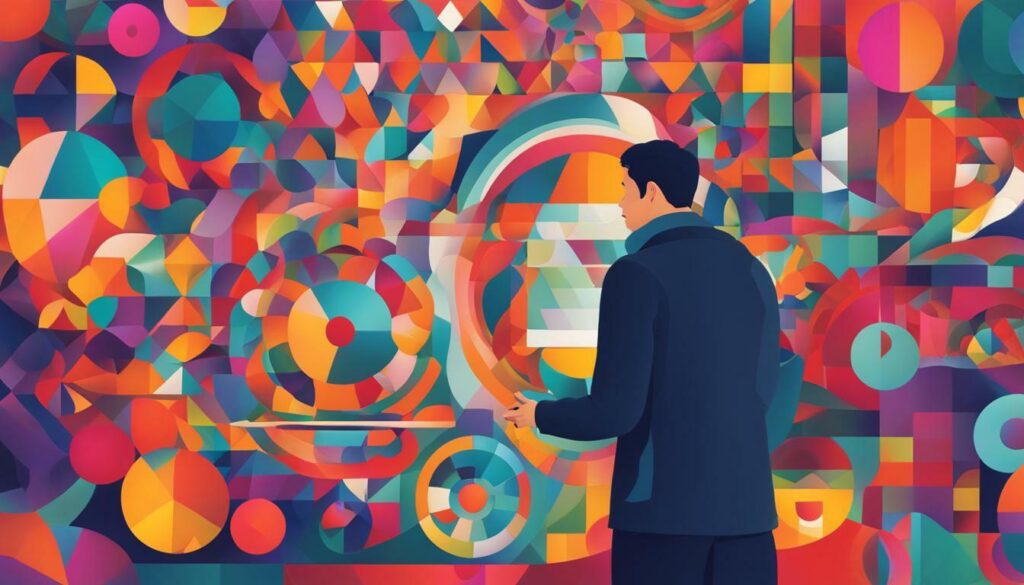
Lastly, consider incorporating color therapy practices such as meditation or visualization. Close your eyes, breathe deeply, and visualize a color that you associate with enhanced memory and cognitive function. Imagine that color surrounding you and seeping into your mind, creating a vibrant and clear mental landscape.
Remember, while color therapy can be a beneficial addition to your daily routine, it should not replace other memory improvement techniques or medical advice. It is always best to consult with a healthcare professional for personalized guidance.
Color Therapy for Older Adults with Dementia
Color therapy offers significant benefits for older adults with dementia, providing them with a sense of security, comfort, and potential memory enhancement. The use of specific colors can create a soothing and stimulating environment that promotes overall well-being and cognitive function.
Research suggests that incorporating calming colors, such as blue and green, can have a positive impact on individuals with dementia. These colors have been found to reduce agitation, promote relaxation, and improve sleep quality. Creating a living space with soft blue or green hues can help create a calming atmosphere, helping to alleviate anxiety and enhance memory.
In addition to calming colors, energizing colors like red and orange can also be beneficial. These vibrant hues can stimulate brain activity, increase alertness, and boost appetite. Incorporating pops of red or orange in the form of artwork, furniture, or accessories can provide visual stimulation and promote a more active mindset.
| Calming Colors | Energizing Colors |
|---|---|
| Blue | Red |
| Green | Orange |
“Colors, like features, follow the changes of the emotions.” – Pablo Picasso
Creating a multi-sensory experience with color therapy can also be beneficial for older adults with dementia. Pairing calming or energizing colors with soothing music, pleasant scents, or tactile objects can engage multiple senses and enhance memory recall. For example, a room painted in calming blues can be complemented by soft instrumental music and the scent of lavender, creating a sensory environment that supports relaxation and memory improvement.
It is important to note that color therapy should be used as a complementary approach and not as a substitute for medical or professional care. Consulting with healthcare providers or therapists can help determine the most suitable color therapy techniques for individuals with dementia.
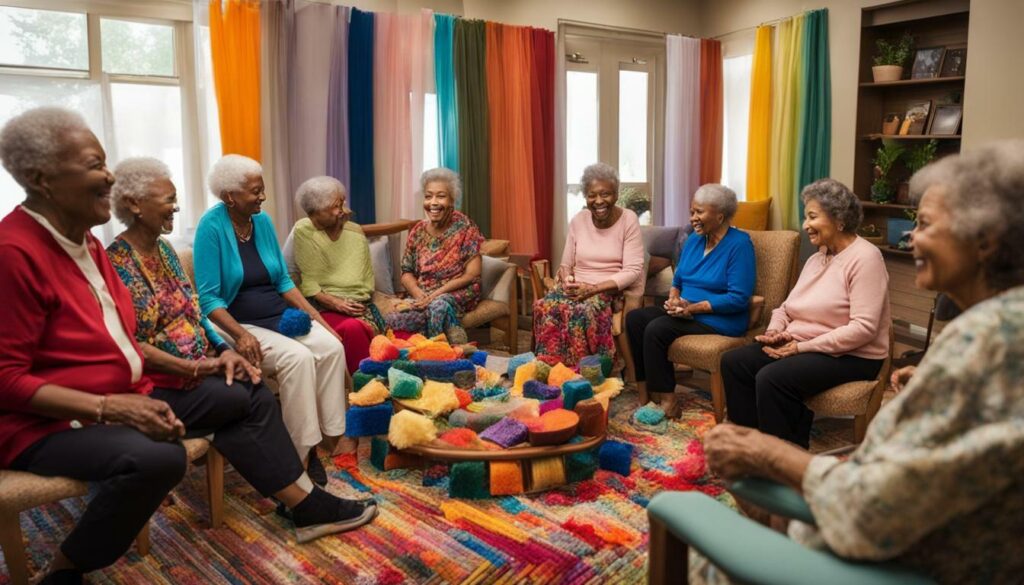
Color therapy presents a promising approach to boost memory and cognitive function, and by embracing its principles, we can unlock the power of colors for improved brain health and memory retention. While scientific research on color therapy is limited, there is evidence to suggest that colors have physiological and psychological effects on people.
For instance, blue is known for its calming properties, making it conducive to better sleep and relaxation. Green, on the other hand, is gentle on the eyes and promotes a sense of tranquility. Red can stimulate brain activity and even increase appetite, while orange has the ability to boost creativity and enthusiasm.
When it comes to older adults living with dementia, color therapy can provide much-needed safety, security, and comfort. It has been found to alleviate symptoms of depression and increase energy and appetite. Incorporating colors into daily life and living spaces can have a positive impact on memory and overall well-being.
While more research is needed to fully understand the mechanisms behind color therapy, we can start taking advantage of its benefits today. By surrounding ourselves with calming colors like blue and green, or energizing colors like red and orange, we can create an environment that supports our memory and cognitive function. Let’s embrace the power of color therapy and unlock its potential for improved brain health and memory.
FAQ
What is color therapy?
Color therapy, also known as chromotherapy, is a practice based on the belief that color and colored lights can improve physical and mental health.
Is there scientific evidence to support color therapy?
While scientific research on color therapy is limited, there is evidence to suggest that colors have physiological and psychological effects on people.
What are some memory-boosting colors?
Blue is calming and can improve sleep, green is calming and easy on the eyes, and red can stimulate brain activity and increase appetite.
How can color therapy benefit older adults with dementia?
Color therapy can provide safety and security, calm and comfort, alleviate depression, and boost energy and appetite in older adults with dementia.
How can I incorporate color therapy into my daily life?
You can incorporate color therapy into your daily life by using memory-boosting colors in your environment and embracing color therapy practices.


